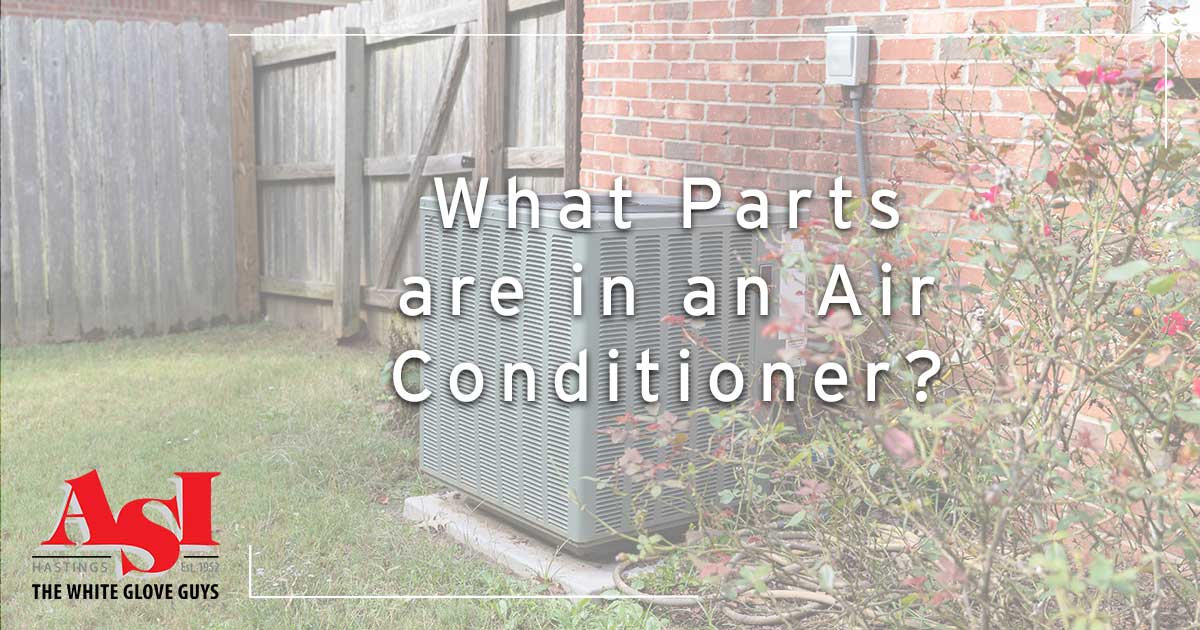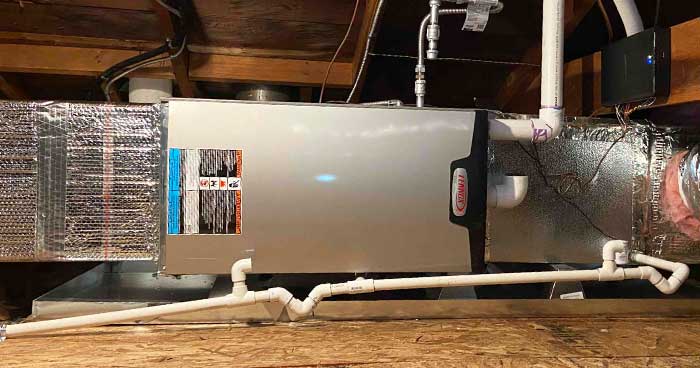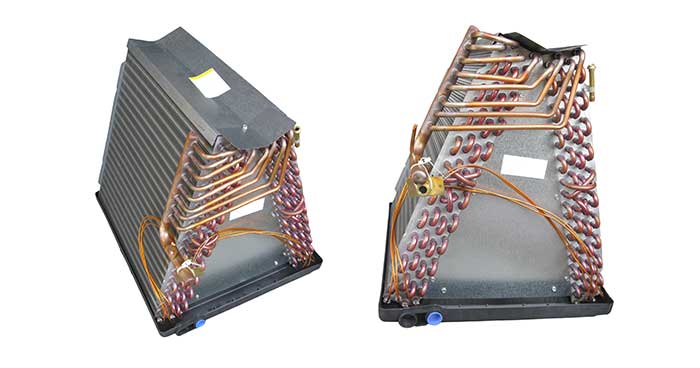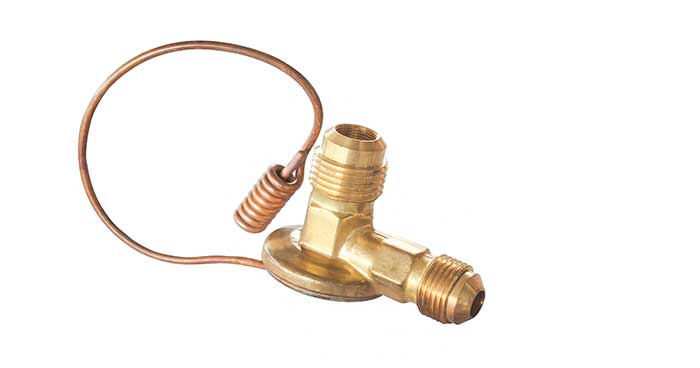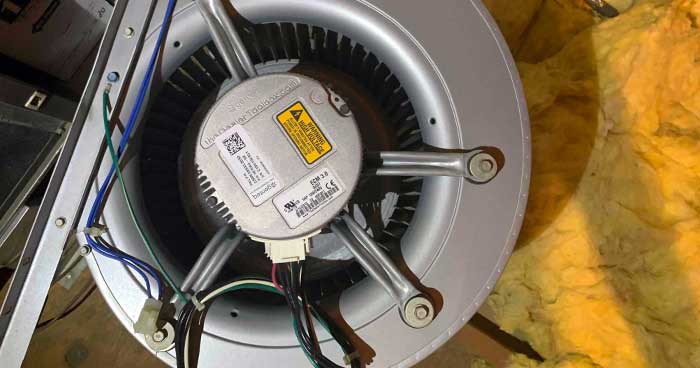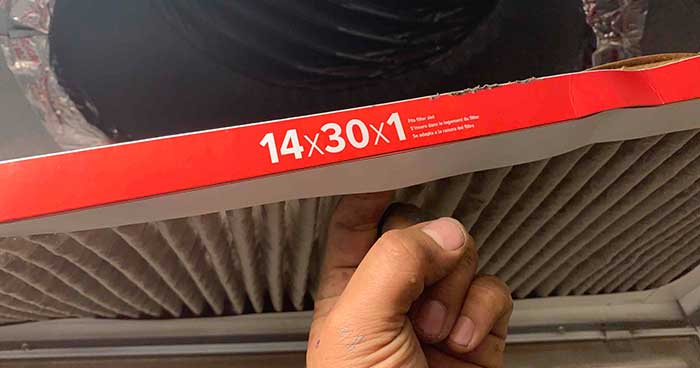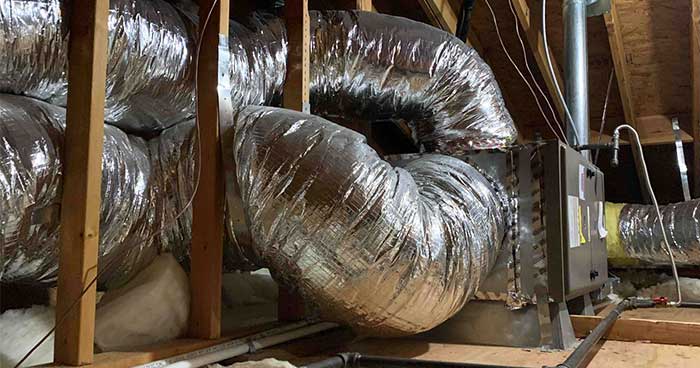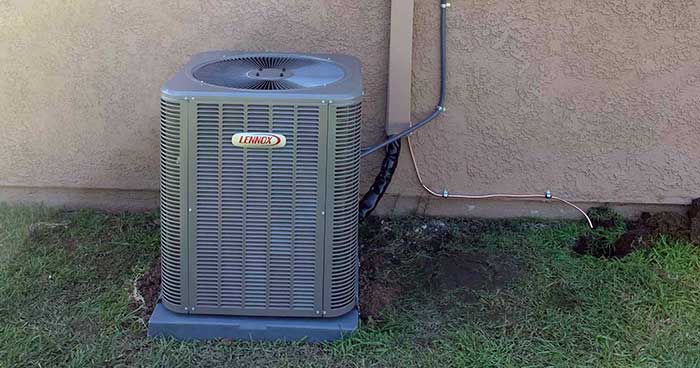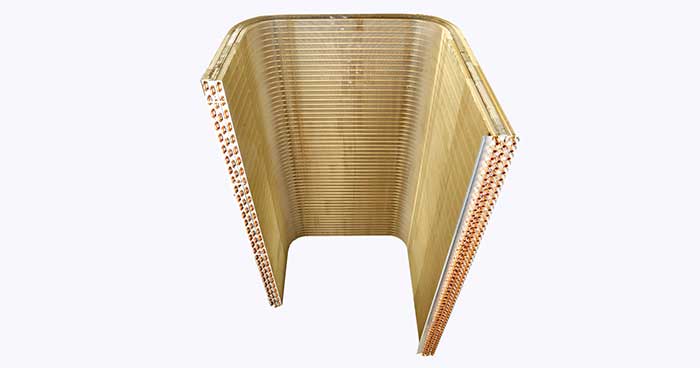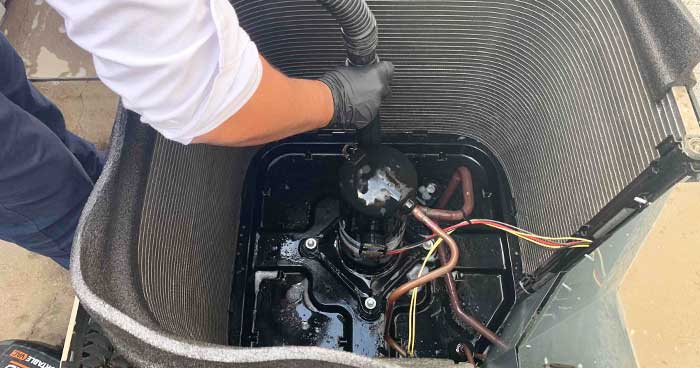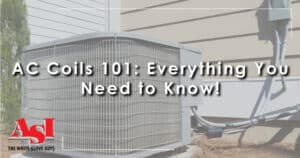There’s nothing like a San Diego summer. We love the warm nights, but the days, not so much. That’s why we are incredibly grateful for the invention of the central air conditioner.
Unfortunately, it’s a little too easy to take this technology for granted. For many, the AC is just the metal box that sits outside. But for us, it’s an intricate system that works hard to help keep you and your home cool.
Believe it or not, your cooling system also needs the furnace to function. This appliance, generally attributed to heating only, is essential for cool air. Here are the parts that are in an air conditioner and what they do.
What Parts are in an Air Conditioner: The Indoor Unit
The furnace is really the MVP of your entire HVAC system. It keeps everything running during the summer and winter. It works all year long, which is why routine tune-ups are so important.
Thermostat
Thermostats are found inside and generally on a wall somewhere. They are the way you can communicate with your HVAC system.
The thermostat tells your system when to turn on, when to produce cool air, warm air, and for how long. Without the thermostat, there’s no way your system could properly function.
The best part about the thermostat is that you can program it to suit your individual needs and lifestyle.
Evaporator Coil
Without the evaporator coil, you wouldn’t have cool air. There’s no way around it. Before we get into that though, we need to tell you what refrigerant is.
Refrigerant is a “working fluid” that is pumped from your outdoor condenser to the indoor furnace. With heat transfer, refrigerant pulls warmth and humidity form your indoor air.
When refrigerant reaches the evaporator coil, it gets incredibly cold. So cold, that it becomes a vapor. This vapor removes the heat from air found inside your home. Thus, making cold air.
Air conditioners do not make air cold, they simply remove heat.
The air you breathe in your home is all recycled air. The HVAC system pulls ambient air in, removes the heat from it, and sends nice, cool air out. The evaporator coil is what removes the heat from your air.
Expansion Valve
The expansion valve is an incredibly small part with a very big role. It controls how much refrigerant gets into the evaporator coil.
This small device is located in the refrigerant line itself. The expansion valve allows your system to run efficiently and not waste any refrigerant.
When the evaporator coil gets too much refrigerant, the refrigerant collects at the bottom of the coil and is wasted. When there’s too little refrigerant, the evaporator coil is forced to work twice as hard to make the same amount of cold air you’re used to.
Blower
Before we get too ahead of ourselves, something is needed to bring the air into the HVAC system and send it out to the home. This is where the blower comes in. The blower is the fan that facilitates the movement of air into and out of the HVAC system.
Blower Motor
Ever blower needs a motor. Without the motor, the blower wouldn’t regulate itself. The blower motor keeps everything on track and running smoothly.
Filter
We talk a lot about the importance of the air filter. One of the best things you can do for your HVAC system is to change the air filter at least twice per year. Once in the spring before you start up your AC and once in the fall before it’s time to kick on the furnace.
The air filter plays two very big roles. It keeps your furnace nice and clean, and it removes dust, debris, and other contaminates from your indoor air. When the HVAC system itself gets too dusty, parts can stop working and get clogged up.
An air filter that’s too full is also unable to keep dust, dander, allergens, and other debris from the inside of your home. Some are filters are so strong they can reduce the number of bacterial and viral particles in the air.
Ductwork
All that treated air needs some direction. Ducts, or ductwork, are flexible metal tubes that carry treated air from your HVAC system to the inside of your home.
Ducts are often running through your attic, walls, basement, and even in craw spaces.
Damper
The damper is air traffic control for your HVAC system. They control air flower and direct air down different ducts.
Dampers make sure every duct gets the same amount of air, so your home is evenly cooled.
Supply and Return vents
You know those vents you see in your home? They have two jobs. Some vents pull air in from your home and send it to the HVAC system, these are called return vents.
Supply vents are the ones that actually send air into your home. They are different vents, but both aid in the goal of keeping your home comfortable.
What Parts are in an Air Conditioner: Outdoor Unit
It’s time to step outside! Your outdoor unit, the condenser, is only used during the summer. It has many parts, but 4 are crucial to the cooling process.
Condenser Coil
The condenser coil releases heat into the atmosphere. This is an oversimplified definition, but this is its primary purpose.
After the evaporator coil pulls all the heat from your indoor air, that heat needs to go somewhere. The refrigerant, which absorbed the heat, is sent to the condenser. The condenser coil cools enough to initiate the heat transfer process.
The heat in the refrigerant moves to the condenser coil. The condenser coil then releases that heat into the outside atmosphere.
Fan
The condenser coil can pull all the heat it wants to, but without the fan that heat isn’t going anywhere. The fan sends the heat away from your home and into the atmosphere.
A condenser’s fan is constantly moving heat away from the condenser. This helps ready the condenser to pull more heat from the refrigerant and helps keep the unit from overheating.
Compressor
We’ve explained that refrigerant moves from the furnace to the condenser, but we never touched on how. Refrigerant is able to move with the compressor. The compressor helps move refrigerant though the HVAC system and converts the refrigerant from hot to cold.
The compressor pulls the refrigerant back to the condenser, compresses it back into a liquid and sends any heat it captured out through the condenser coil.
Refrigerant Line
The refrigerant needs somewhere to go! The refrigerant line directs it from the condenser, into the furnace, and back again.
Know When It’s Time to Call for Help.
The thing about air conditioners is that they’re hard to work on. While you can do small things, like changing the air filter, it’s best to leave the big stuff to the experts.
[/fusion_text][/fusion_builder_column][/fusion_builder_row][/fusion_builder_container]

